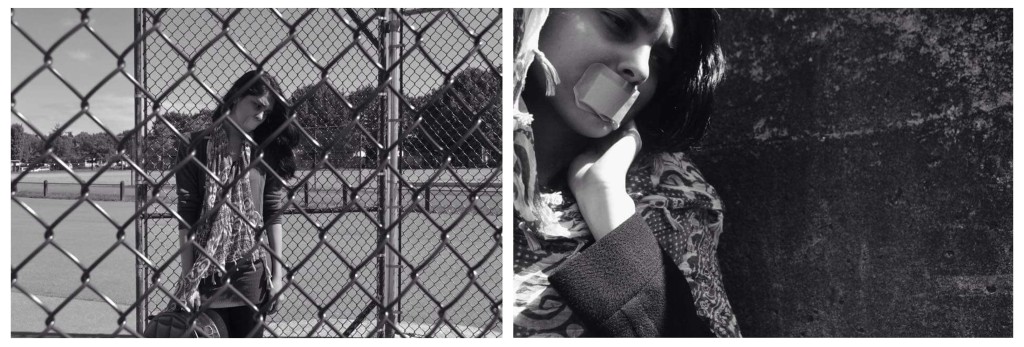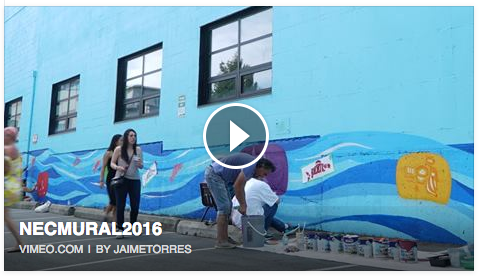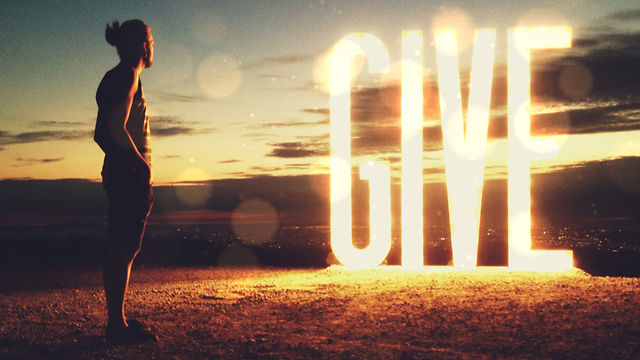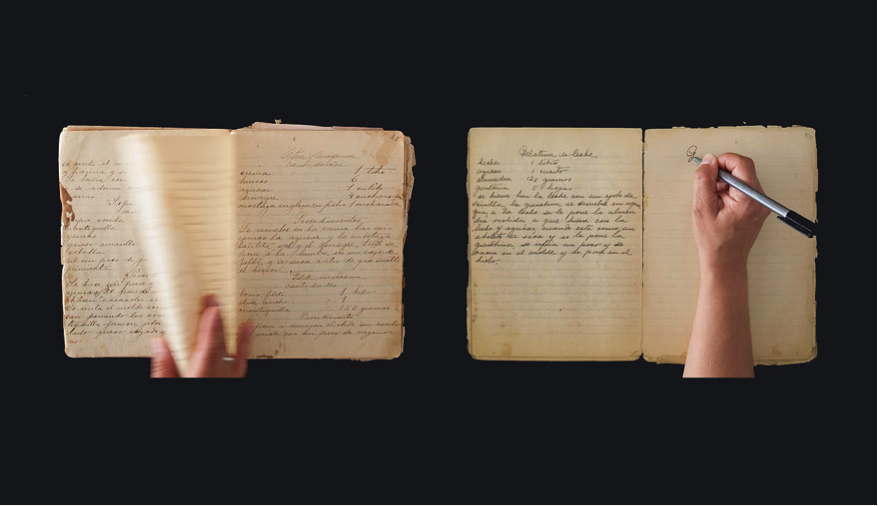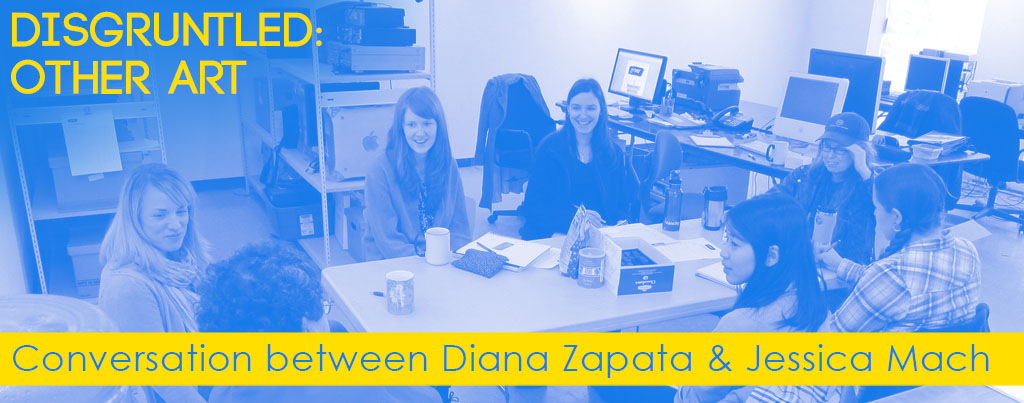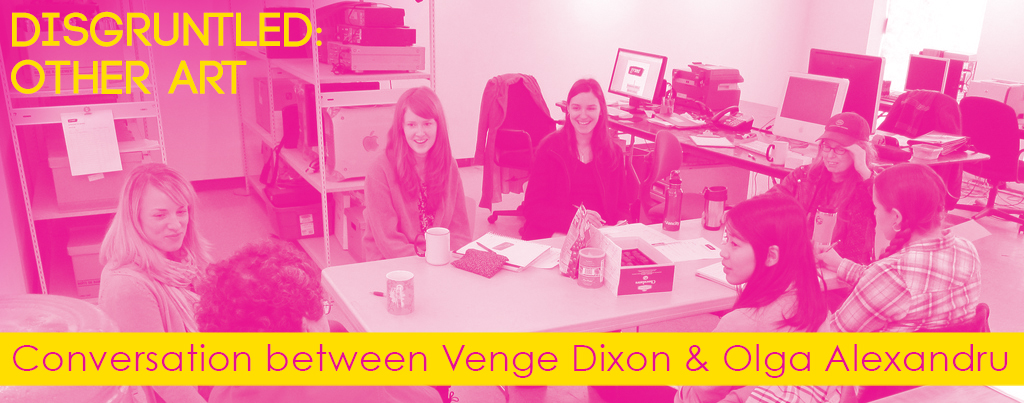
grunt gallery has had the pleasure of meeting and working with a great number of fantastic volunteers who have contributed their time to various projects at our space – and who have subsequently become important members of grunt gallery’s community.
We’re happy to share a conversation between two of grunt gallery’s archive volunteers, Olga Alexandru and Venge Dixon, about DISGRUNTLED: Other Art, grunt’s first eBook that commemorates the 30th anniversary.
Venge has worked with grunt gallery for many years – volunteering, editing and establishing the very tiny base of what was to become grunt’s extensive, wonderfully well-staffed project, Activating the Archives (ATA). Venge Dixon is a visual artist, musician and occasional composer. These days she is working on the first book of a long planned comic book series.
Olga first started as an archival intern for the ATA project and went on to become the database manager. She co-created educational study guides for high school students using material from the archives. She has also sat on the curatorial committee. She is a poet & zine-maker who now resides in Bristol, UK.
Online Messaging Conversation occurred on July 15, 2015 –
Venge: Would you like to begin with Polly Bak, or would you like to begin with a less dense text (and by that I mean wordy, not excessive)?
Olga: We can start with Polly Bak. It’s the first essay I read and I was so glad that I did because it definitely helped frame the conversation in my head.
Venge: Sounds good. How did it help you frame the conversation? I seem to be still without one—[a] frame, that is.
Olga: Well, for me everything related to grunt has to do with identity: the identity of who I was as a woman starting my art career, the cultural identity of the artists shown at grunt, and the implications of how we create identity or how it’s created for us. And reading Polly’s essay seemed to confirm a lot of those themes.
Venge: I admit to finding this piece both hectoring and yet full of content with which I do or have identified within myself. She asks questions and provides answers.
Venge: One of my favourite things about grunt is that it provides many, many questions in its exhibitions but does not define an absolute answer, if any answer at all.
Olga: Yes! I agree completely. It presents ideas and makes you think of the implications of certain things but it stops short of telling you what you should think or do as a result. And that, I think, is the making of a great institution. I think it’s a place where things never feel clichéd or like some lesson is being taught.
Venge: Yes. I do think that this is intentional. grunt is open to ideas – many, many ideas. Shows happen because a diverse group of people decide that they suit the space, often because the voice of that particular artist on that particular subject has not been heard. The decision isn’t necessarily that a voice must [be heard], only that it has not been and is therefore worth discussing.
Olga: Exactly. I think they probably pick artists who kind of align with that way of thinking. Showing rather than telling. I feel like Polly does that in her essay. She talks so forthrightly about having White privilege. I like how she makes fun of herself and other “well-meaning” White people, especially by choosing the tongue-in-cheek title “A Good-Hearted White Girl’s Search for Identity.” The section she talks about guilt leading people to hate and fear the thing that makes us feel guilty was so on point. I had to stop for a long time and think about that. It was so simple but it’s so true.
Venge: I had difficulty with some of that “tongue-in-cheekness” – perhaps it is there to lessen the blow, [but] to me it seemed more defensive than matter-of-fact. That does not lessen its impact. The damage done by white shame is real and pervasive. Many of us, including my younger self, sometimes this older one, would rather swallow fire ants than acknowledge that this guilt has/does haunt us and therefore the society in which we live.
Venge: I used to say “but I am only first-and-a-half generation Canadian” or “I didn’t grow up here” or some other “Not My Fault” silliness. This was fueled by fear and a sense that the rage native people might feel towards Whites was somehow mine to shoulder.
Venge: When she speaks about listening being the way to understanding, about her responsibility towards other Whites – in terms of educating them – I am both drawn to the ideas and yet feel, at the same time, that ‘something’ is missing and too much decided.
Olga: Going back to the first thing you said, I only read some parts of the essay as tongue-in-cheek, I think because her tone was difficult to categorize. But what you say makes a lot of sense. At times it does seem quite defensive. But I think that’s probably the point. Because she includes herself as one of the problematic people. Her line “I am one with the murderers and the slaughtered” was very striking. I agree with you though: it’s only part of the solution. I think the narrative around issues of race now is to let POC speak for themselves and not to interrupt with our opinions, which I think it one of the ways forward. I think this segueways nicely into Kamala Todd’s essay about Jeff Thomas’s “A Study of Indian-ness.” His exhibition is a way of reclaiming the representation of Aboriginal people by self-made images. It’s a way to create a more realistic narrative than the fantasy of the empty land and dying Indian that the dominant culture has created.
Venge: Agreed! Not attempting to speak for others does seem to be one of the ways forward. Kamala Todd’s essay speaks of a visible/visibility, presenting a truth about colonial separation within its dominant culture (of which I am a privileged member), between its version of history and the reality that stands before it, clear and no longer silent.
Venge: I think that Jeff Thomas’s work provides us with a clear place from which to watch, listen and not insert our White/ colonial/thieving sense of things into the frame.
Olga: Yeah. I remember while working on ATA I came across the photo of his exhibition that showed all the cheesy romance novels with the really chiseled Native Warrior characters on the cover and I thought “Man! I wish I had seen that exhibition”. Here’s the photo.
Olga: It was just such a jarring thing because you can see it from an outsider’s point of view. It looks super cheesy and stereotypical. And then you realize, well so are things like the Edward Curtis photos Kamala references, yet somehow one has become way more acceptable as reality.
Venge: Wow, these are great; thanks for the link, Olga! And yes, that moment it takes to realize that you have seen the “joke” in high school history books, public art galleries, train stations, court houses presented with great serious… and, oh, crap! Did I understand those ‘jokes’? Probably not. Do I understand Thomas’s? Probably not.
That’s “seriousness.”
Olga: Yeah, like it’s kind of crazy that kids are still being taught some bullshit colonial reworking of history. There’s an amazing part of Polly Bak’s essay that talks about 1492 and how the land was in fact not empty: “By 1492 this land had been transformed by many, many generations of settlers and builders, mounds, temples, towns, cities, dams, farming, hunting, logging, fishing; the land was lived on, fought over, buried in. There were parents and children. Places had names. Full, the land was full.” When you see that it’s so hard to listen to any justification for why history is still taught through colonial lenses.
Venge: It has become increasingly deliberate, the Colonial ‘lie as history’. Does anyone still believe it? Is there a reason to? Yes. We are living on land that does not belong to us, creating an overlay of impossible steel and glass structures, hoping that by our excess our thievery will go unnoticed.
Olga: Yeah, I’m not really sure how the lies are still believed to be true. I think it’s really similar to what’s happening in the US with the treatment of Black people, especially young, Black men. The country has been in denial for a long time as to the treatment towards Black people. And now only through self-made movements like #BlackLivesMatter is the truth being exposed. And it is making everyone super uncomfortable. Because they’d rather not know. Because then they have to do something about it or be complacent. And if they’re complacent and still allowing systemic injustices to occur then they don’t know what that says about them as human beings.
Venge: I think that #BlackLivesMatter and the increased public awareness of Black lives not seeming to matter is the truth being re-exposed. The dominant culture opens one eye, closes the other, and then, over a decade or so/or less, closes the other. This is not the first time African Americans have had to yell very loudly to make us White people listen, this is not the first time native peoples of the world have had their lives paid lip service to. Will we go beyond half sight/ half hearing? Will we be hearing and seeing the very same outrages committed in the names of Whites everywhere and acting surprised all over again? I do not have much faith in us… I listen, see, and I haven’t actually done a damn thing.
Venge: Or is that, perhaps, what I need to do?
Olga: Yeah, I’m definitely not trying to say I have answers, because I sure as hell don’t. I think you’re right. It comes and goes out of season for the dominant culture to care about POC. It’s fucked up that their fights get picked up and dropped according to the flavour du jour. I mean not to be cheesy but I think this is the role of art. To bring these issues to the forefront, to make people uncomfortable in an environment they didn’t expect it. Maybe people are tired of politics. Maybe the fight needs to move into a different arena.
Venge: I think you’re right, not cheesy: art has the ability to challenge, to bring up the well-hidden, obvious failings of the society in which it persists. Persists despite funding losses, proscription, mockery, derision. Art is powerful, and its power belongs equally to all who participate. I don’t mean that all galleries are open to all artists… I mean that art and artists have a voice outside of absolutes, outside of societal ‘truths’. It is sometimes possible to hear another better when you are silent in the presence of their creation.
Venge: This seems like a very good time to talk about Paul Wong’s poem from 1999. He is speaking of a time of great creative upheaval and willingness on the parts of artists and audiences alike to leap into the unknown.
Olga: Yeah, I love the poem; that’s why I wanted to talk about it. I think I first saw it in one of the other publications grunt did and I remembering chuckling to myself. I didn’t know anything about performance art before I started working at grunt, so it was amazing to learn about the performance scene in the ‘90s. I think the poem is kind of what people say about performance art, either against it or as a way to defend it.
Venge: Yes. It a celebration of the form, the adventure, the confusion and, oh yeah, heavy drinking and the cigarette break!
Venge: There was also this sense that anyone might be a part of the experience. That maybe our purpose one the planet was to make art – with our bodies, our stamina, our loud and quiet voices and our outrageous chutzpah!
Olga: Yeah, looking back at the photos and seeing the footage of the performances and even hearing people’s stories made me wish I had been there. You know, like people say they wish they’d been in New York in the ‘80s or whatever. But I think grunt managed to channel that feeling into the gallery as a whole. From the first time I went there, to a solstice party, everyone was so friendly and welcoming. We kind of created this family out of that place. I know it’s been around for 30 years, so I’ve seen the different iterations of the family, but man! it feels great to have been a part of it. To still be a part of it even though I live far away now. I feel like grunt will always be a place I can go home to, you know?
Venge: What is on the walls or installed in the room, the people who come for a while and stay forever: it all feels like a part of a wonderous spiral, ever-changing and yet always moving back towards itself and away again. It has been a privilege for me to be a small part of that and a thrill to have met so many amazing people. I’m with you: near or far, I will be there.
Olga: Wow. That’s so beautiful Venge. That place opened up so many things in me. Not to get all existential, but it really changed the way I thought about myself. I think working there finally gave me the confidence I needed to pursue the things I loved. The people I met there definitely changed my perception of what normal is. I think it allowed me to be myself and to grow into myself as well.
Venge: I think there is more to be said about everything we have spoken about – way more. But I do have to shave my head sometime this afternoon and am wondering: are there things we left unsaid which we should have mentioned? Are there points you really wanted to make that you have left unstated? Where are you in this process now?
Olga: I think it’s mostly been said, to be honest. I thought we could maybe share a couple of our favourite moments from our time there to end it?
Venge: Sounds good. I’ll leave out the crying. You start.
Olga: Haha! Oh, there were definitely tears of frustration! There’s no denying that. But somehow it was all worth it. So, one of my favourite things was the first solstice party I went to. There was a photo of me standing next to Lawrence Paul and I totally freaked out when he got tagged in it because I had learned about him in school and there I was just casually standing next to him, not knowing. Everyone thought it was hilarious that I didn’t know it was him and that I was freaking out about it. It was a crazy experience. And probably every time after I talked to him I was like, “OMG. I’m talking to Lawrence Paul. Why am I saying all these stupid things?”
Olga: My other favourite thing was probably standing in the corner at the openings talking to you, Jessica, or Diana. It became such a running joke between me and Jessica that “the corner” was our thing.
Venge: One of my early memories of grunt was standing in the gallery at Fiona Mowatt’s opening of her Giant Condoms exhibition: all these exquisitely drawn representations of the ordinary made extraordinary by context. That was a long time ago and, at the time, was taken by many as feminist and political statement.
Venge: When I went to Glenn Alteen in the early thousands, after many visits to the gallery and some actual participation, very much in need – as a crazy woman on disability – of a volunteer position, he was completely non-judgemental. He made it so easy and so ordinary. I will always love him for that.
Olga: I agree. Glenn is the most unpretentious art dude ever!
Venge: grunt has been a home for me, a hiding place, a meeting ground, an argument, a celebration of life and continues ever to be a place of profound learning. I feel very lucky to have worked there, to share connections with the people there and to have met you, Jessica, Diana, Kendra, Steven and so many great people, including Lawrence Yuxweluptun!
Olga: Hear hear! Also I loved talking to Demian about robots. Let’s not forget that.
Venge: Oh those robots! They are here, Demian, you were so right: they are taking over!
Olga: Haha! Well, Venge, it has been lovely taking this stroll down memory lane with you. And getting fired up about social justice. I feel like the conversation doesn’t really end here, does it? We’ll always be talking.
Venge: That’s very true and also cool: we’ll be talking ‘til we can’t.
Download the 30th Anniversary eBook here.
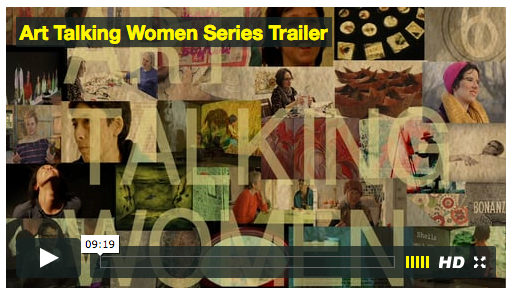
![LOVE Line-03[2]](https://grunt.ca/wp-content/uploads/2016/06/LOVE-Line-032-1024x731.jpg)
